Look up at the sky. Ask yourself, “Has the sheep eaten the flower or not?” And you’ll see how everything changes. And no grown-up will ever understand how such a thing could be so important.
Antoine de Saint-Exupéry
The Little Prince
If you are a regular reader of The Modern Trobadors, I suspect that you know “the little prince.” It’s likely that you know him well. People who travel, like the little prince, open their eyes, their ears, and their hearts to the adventures the world has to offer and to the lessons introspection provides.
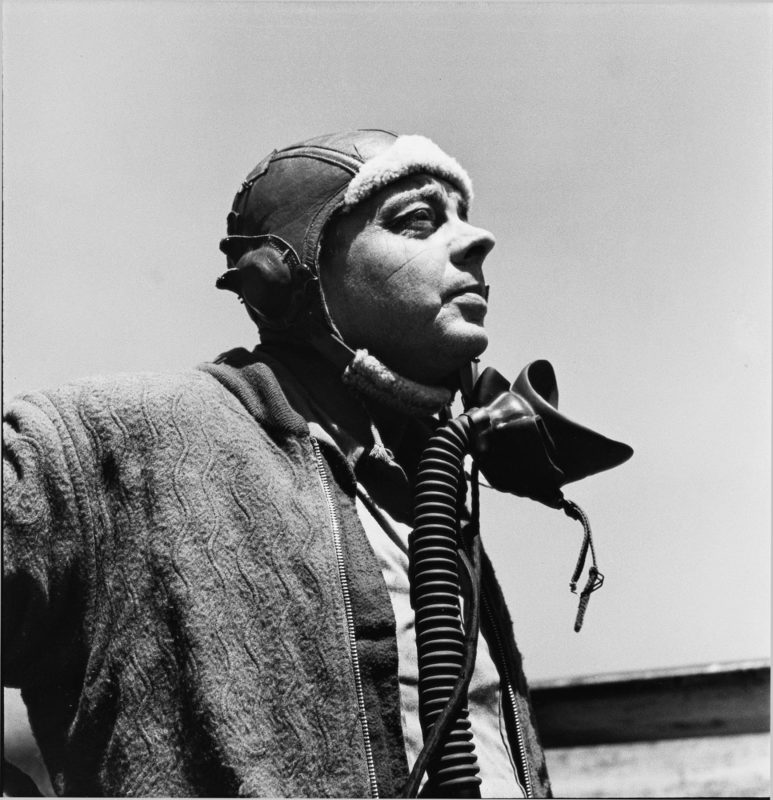 |
Antoine de Saint-Exupéry in Alghero, Sardinia, May 1944
Collection of Andrea Cairone, New York
© John and Annamaria Phillips Foundation |
The Little Prince (or Le Petit Prince), written by Antoine de Saint-Exupéry (1900-1944) and first published in 1943 in New York—in both English and French—is the subject of an exquisite exhibition in The Morgan Library & Museum in New York. Entitled “The Little Prince: A New York Story,” this exhibition focuses on the book’s New York roots and corresponds with the 70th anniversary of the publication of the book.
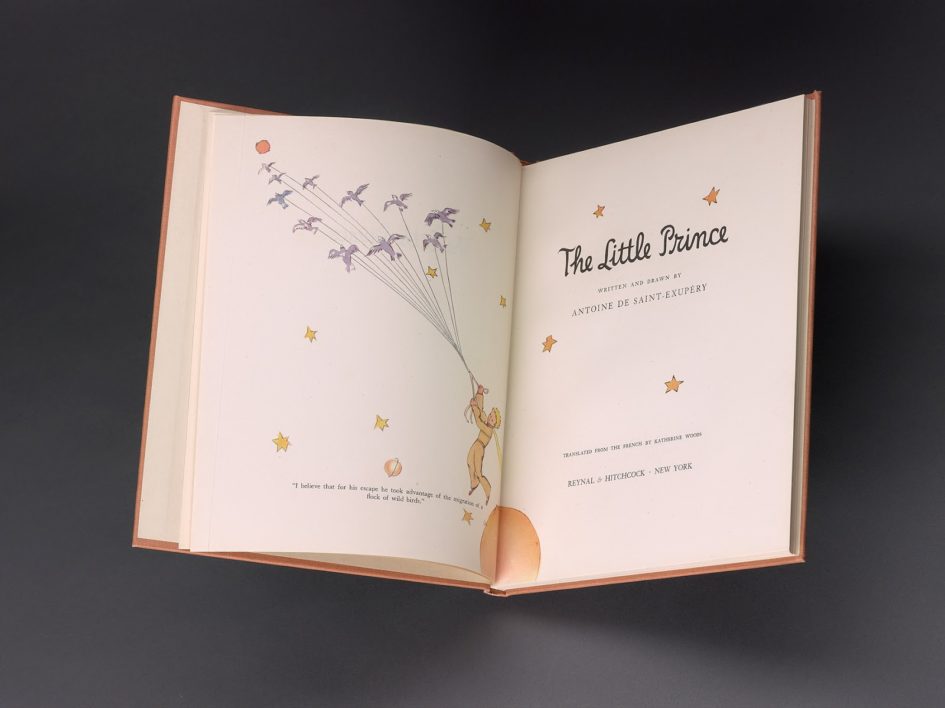 |
Antoine de Saint-Exupéry (1900-1944)
The Little Prince
The Morgan Library & Museum, New York
Photography by Graham S. Haber, 2013 |
Between 1940 and 1943, while living in New York (on Central Park South, on Beekman Place, and in an estate with his wife on Long Island), he penned his masterpiece. It was a French-speaking friend in New York, wife of one of the principals in the firm that eventually published the book, who encouraged him to turn his doodles of the little prince into a story for children. References to New York, Long Island, and Rockefeller Center were in his initial versions.
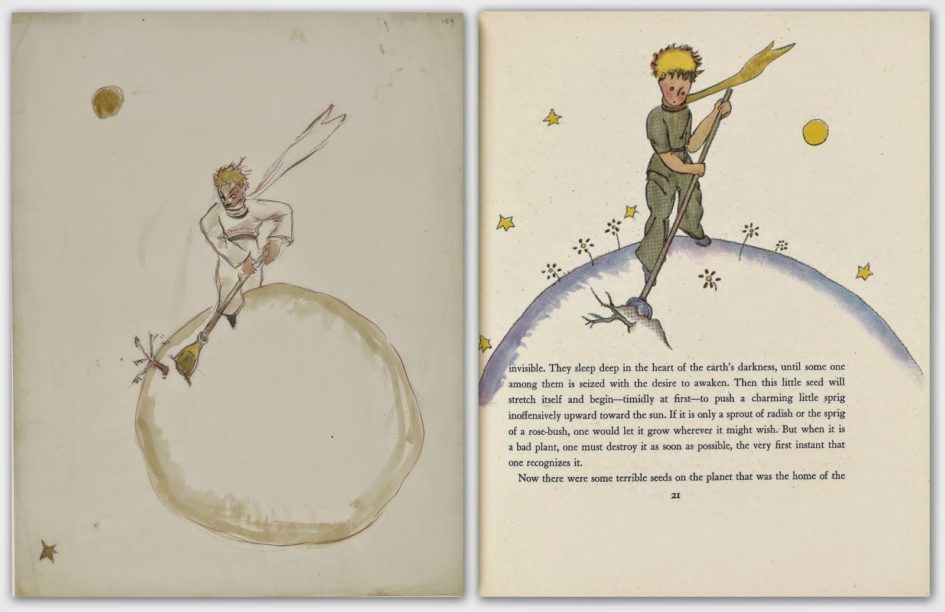 |
Antoine de Saint-Exupéry (1900-1944)
Drawings for The Little Prince
The Morgan Library & Museum, New York
© Estate of Antoine de Saint-Exupéry (left)
Photography by Graham S. Haber, 2013 |
The Little Prince is the charming story of, not surprisingly, a little prince who is on an “interstellar journey,” eventually landing on earth, his seventh and final stop. There, in the Sahara desert, he meets a pilot who has crash-landed nearby. (Saint-Exupéry himself was an aviator and was…
also stranded in the desert.) The little prince and the pilot (who narrates the tale) talk and explore the desert
and themselves and, in the process, come to a much greater understanding about what is most important in life—forming meaningful relationships with other people.
Although it may appear to be a children’s book, its message resonates with all ages and has touched the hearts of millions of people around the world. It has been translated into as many as 270 different languages and dialects (including braille) and has sold over 140 million copies. Did you know that Orson Wells was so taken with The Little Prince that he quickly acquired the film rights, wrote the screen play, and cast himself as the pilot?
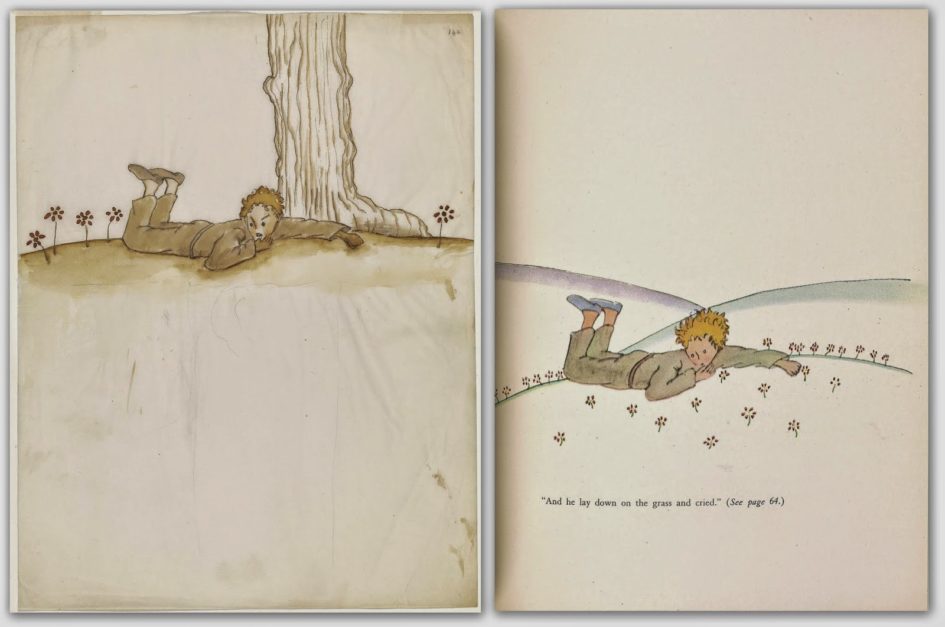 |
Antoine de Saint-Exupéry (1900-1944)
Drawings for The Little Prince
The Morgan Library & Museum, New York
© Estate of Antoine de Saint-Exupéry (left)
Photography by Graham S. Haber, 2013 |
The author, despite some controversy surrounding the cause of his death, is so revered in France that every child knows The Little Prince well and the image of Saint-Exupéry graced several French postage stamps and the French 50-franc note (until the Euro was adopted).
“I love the book,” said Janine Kolb, my French teacher who grew up in France during WWII. “I read it to all my children, in French,” said Kolb.
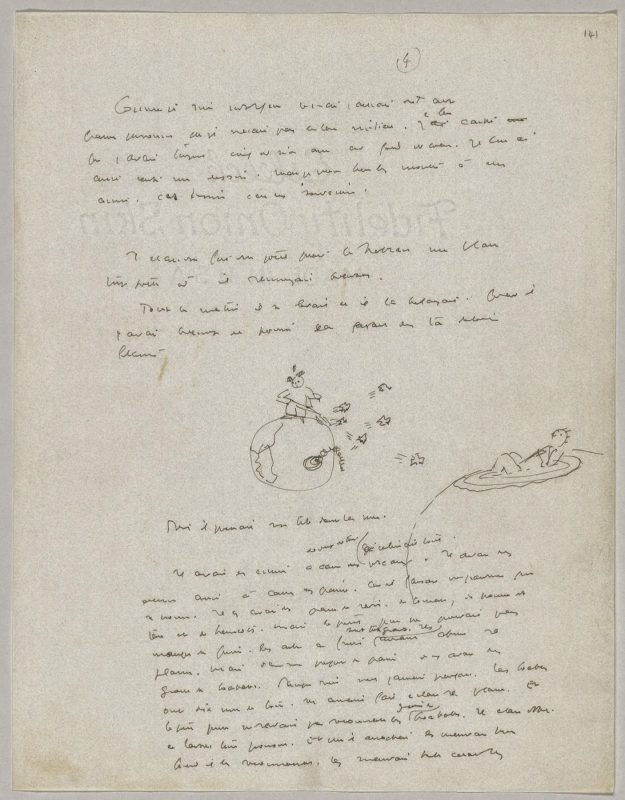 |
Antoine de Saint-Exupéry (1900-1944)
Manuscript of The Little Prince
The Morgan Library & Museum, New York
© Estate of Antoine de Saint-Exupéry
Photography by Graham S. Haber, 2013 |
A vast amount of material composes the exhibition about this very slim book. There are twenty-five hand-written manuscript pages that bear the signs of a writer at work—revisions by the author, burns from his cigarettes, and stains from his beverages—and forty-three original ink, watercolor, and pencil drawings for the book. Personal letters, photographs, and various artifacts as well as exceptionally detailed curatorial notes bring to life the intriguing history of the creation of Saint-Exupéry’s endearing story and the fascinating story of the aristocratic author himself.
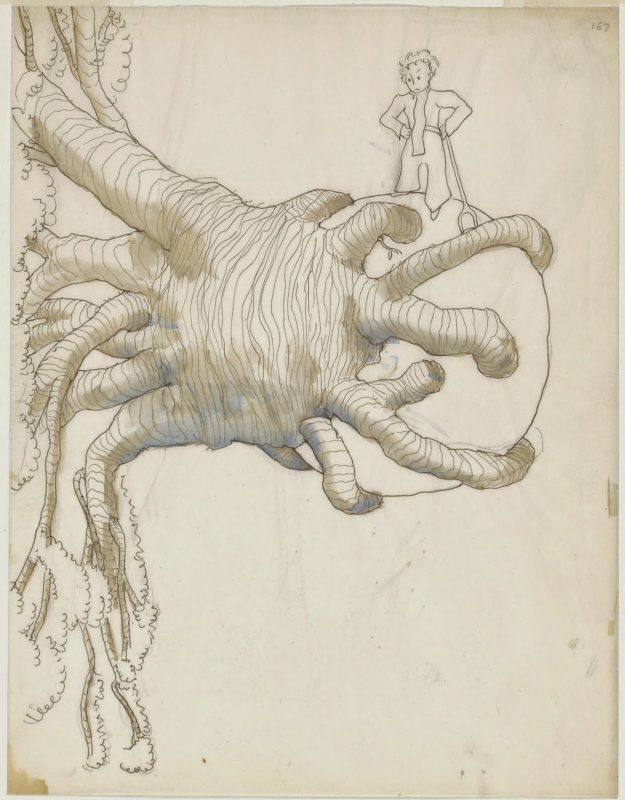 |
Antoine de Saint-Exupéry (1900-1944)
Drawing for The Little Prince
The Morgan Library & Museum, New York
© Estate of Antoine de Saint-Exupéry
Photography by Graham S. Haber, 2013 |
The drawings on display are, in many cases, very different from those that were eventually published, as can be seen by comparing those to the work that was eventually published (on display side by side). The observer is given a window into the author’s ideas about illustrating the story, some of which—for example, taming an escargot—were jettisoned. Saint-Exupéry had been sketching the little prince for many years, as he was developing his character. Although he had written several books before this one, he had not illustrated any of them—this one, he wanted to do himself.
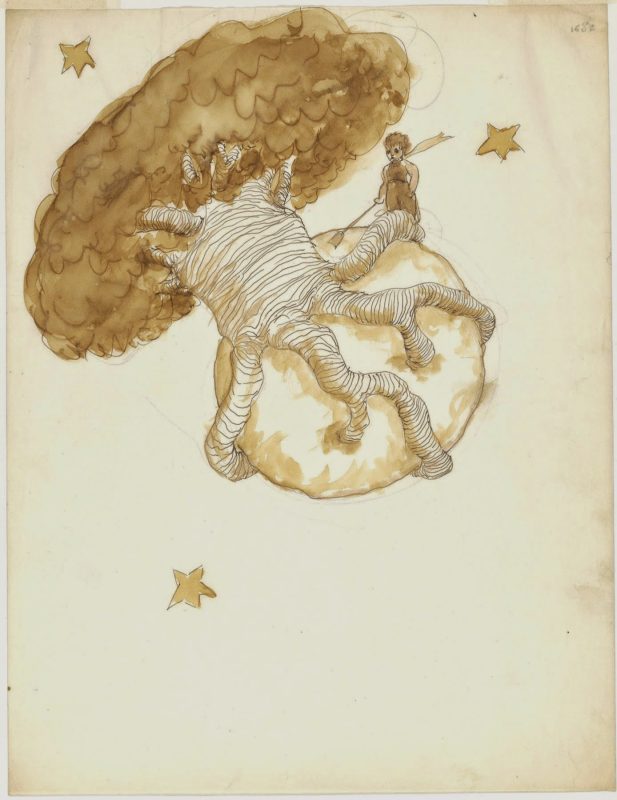 |
Antoine de Saint-Exupéry (1900-1944)
Drawing for The Little Prince
The Morgan Library & Museum, New York
© Estate of Antoine de Saint-Exupéry
Photography by Graham S. Haber, 2013 |
“Seeing the illustrations allowed us to see the meticulous detail that went into his artwork,” said Towny Manfull, who recently saw the show. “Just looking at the final drawings in the book, while they are heartwarming, they don’t capture the effort that went into creating them.”
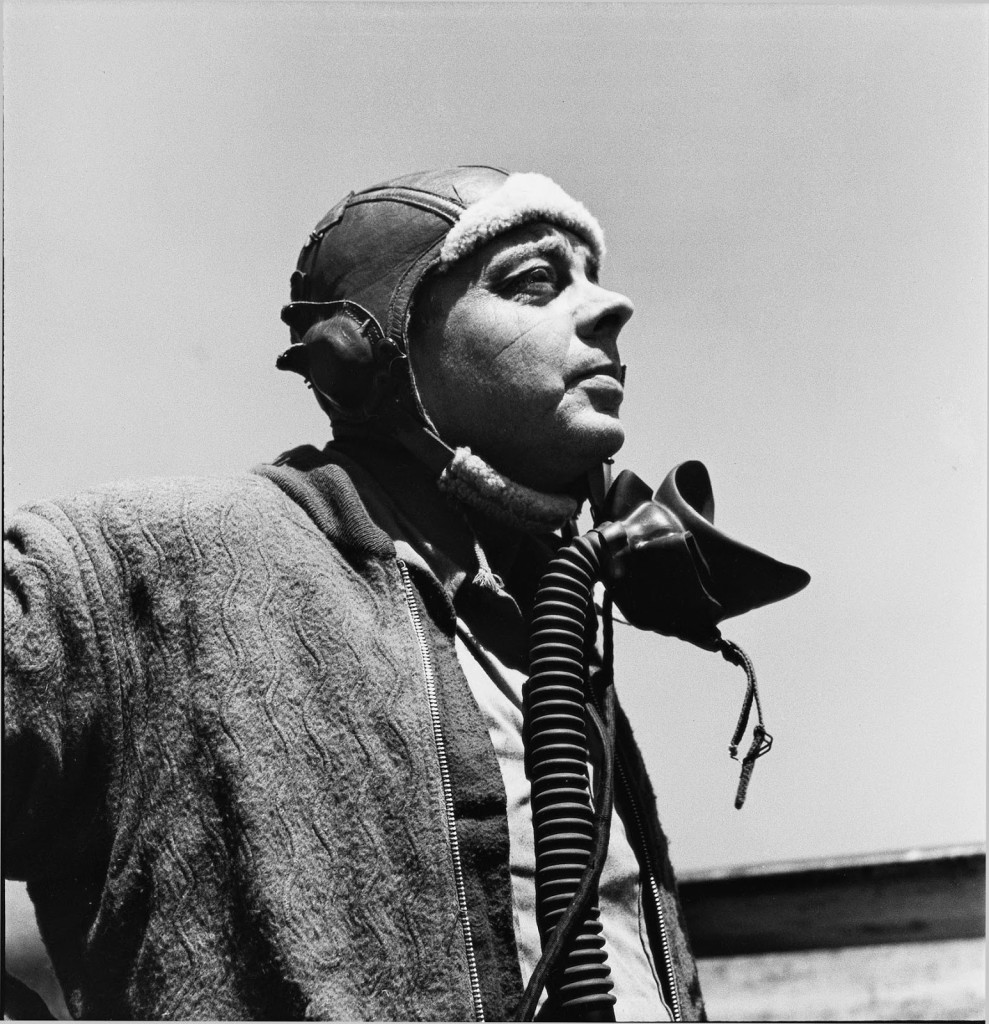
Identity bracelet of Antoine de Saint-Exupéry (1900-1944) worn during his last mission with the 2/33 French Renaissance Group under the command of the Mediterranean Allied Photo Reconnaissance Wing, July 1944 © Estate of Antoine de Saint-Exupéry
Certainly a highlight of the exhibition is seeing Saint-Exupéry’s silver identity bracelet—which he wore on his last mission, an Allied reconnaissance mission from Corsica to Provence from which he failed to return (on July 31, 1944). In 1998, a fisherman working near the small island of Riou, south of Marseilles, found Saint-Exupéry’s identity bracelet tangled up in his nets. The bracelet is inscribed with his name, his wife Consuelo’s name, and the name and address of his publisher, Reynald and Hitchcock at 386 Fourth (Park) Avenue, N.Y.C., U.S.A. (In 2000, his airplane was found nearby. There were no bullet holes in the plane which led some people to speculate that he committed suicide although, clearly, the cause of the crash will never be definitively known.)
Other memorabilia include Saint-Exupéry’s publishing contract (indicating that he received an advance of $3,000 for The Little Prince and for a second book about “France’s place in the modern world,” which, of course, was never written), letters from fans who wrote of the book’s profound effects, a very favorable review by P.L. Travers (who wrote Mary Poppins), and an invitation to Saint-Exupéry’s Memorial Service.
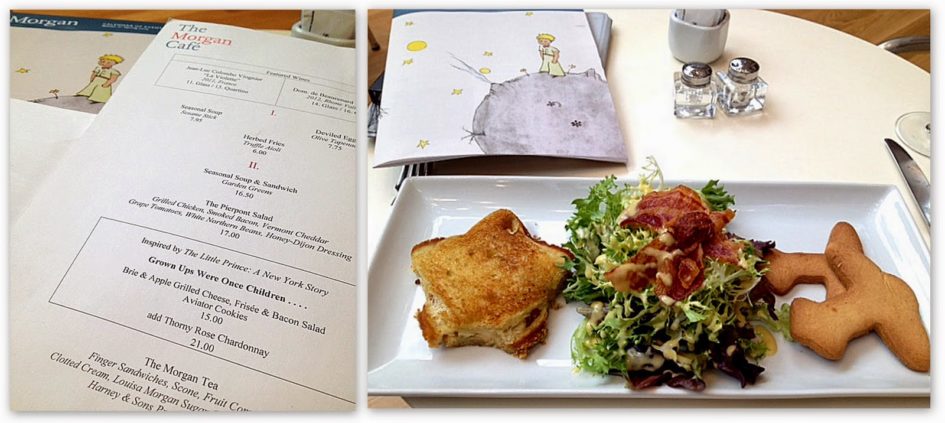 |
| Lunch in The Morgan Café Photo by W.T. Manfull |
It is this kind of detail that makes the exhibition a must-see for those who love the little prince (and want to see the creative process behind Saint-Exupéry’s story) or for those of you who want to get to know him (and understand the significance of the question about whether the sheep has eaten the flower). Invite a friend. The message that Antoine de Saint-Exupéry wished to impart through his beloved Le Petit Prince is that it is the bonds with other people that enrich our lives. Have the lunch at The Morgan Café or The Morgan Dining Room!
And remember:
….One sees clearly only with the heart. Anything essential is invisible to the eyes….it’s the time that you spent on your rose that makes your rose so important….You become responsible, forever, for what you have tamed. You are responsible for your rose.
Antoine de Saint-Exupéry
The Little Prince
___________________________________
Notes:
My thanks to Aaron Stein, Communications Manager, USA, for Air France, for letting me know about the show. Air France is one of the sponsors of “The Little Prince: A New York Story” and “The Official Airline of Le Petit Prince.”
The exhibition runs through April 27, 2014 at The Morgan Library & Museum, located at 225 Madison Avenue (at 36th Street) in New York City. For more information, including hours and admission prices, please visit their website.
If you have never read The Little Prince–or are ready for a re-read–go to your local independent bookstore first and, if that doesn’t work, you can buy it here.










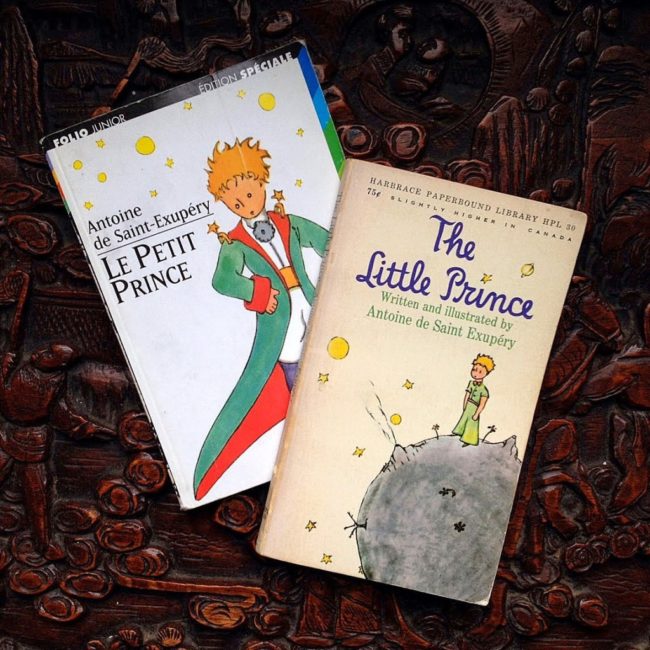
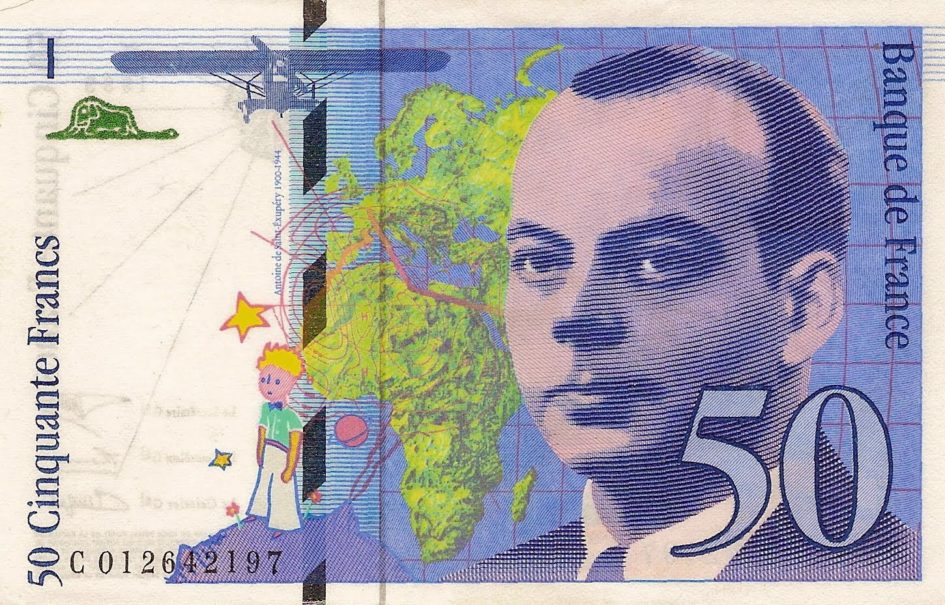
Oh, how fun to see this exhibit! Le Petit Prince was a favorite of mine growing up – and I only knew it in French. I am not sure I still have my copy, or not, but will be checking this afternoon for a reread. The drawings and manuscripts are truly special – this post has made me feel young again!
I might have figured out a photo of me, too!
My macho French Canadian hockey playing architect/engineer father would dissolve into tears every time he read The Little Prince to me and my brothers. Nice article!
A lovely sweet story with an ending left only to our imagine..Sadly mirrored by so many of todays real life stories.
Hi Marc,
I think The Little Prince breaks through a lot of barriers. I wonder what parts of the book resounded so much with your father. I am curious if you were moved to read it to any young people.Thanks so much for sharing your experience.
Hi David, I am glad to hear that you found your book! Have you ever read it in English? I know you would love the exhibit, too.
A handsome one, too!
Trud. Sometimes we don't realize how important someone is until the sheep eats it. Thanks so much for writing.